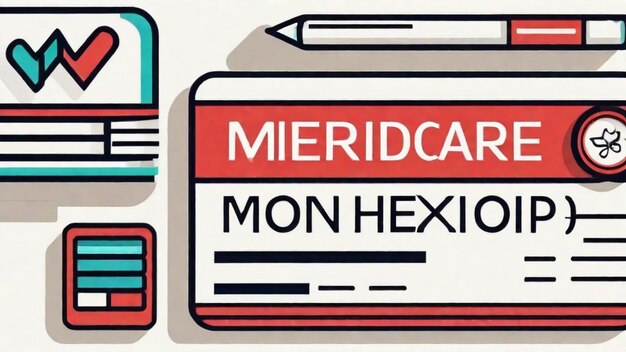How to File a Claim for Employee Benefits: A Step-by-Step Guide

Filing a claim for your employee benefits can seem daunting, but understanding the process and gathering necessary documentation ensures a smoother experience. This step-by-step guide simplifies the procedure, helping you navigate each stage from initial notification to final resolution.
Understanding how to navigate the process of how to file a claim for your employee benefits can be essential for accessing the support you’re entitled to. Many find the process confusing, but with a clear roadmap, it can be manageable.
Understanding your employee benefits package
Before initiating any claim, it’s essential to understand exactly what your employee benefits package includes. This knowledge will guide you in ensuring you’re claiming for eligible services or provisions.
Reviewing your benefits documents
Start by thoroughly reading through all documents provided by your employer regarding your benefits. This might include a benefits handbook, insurance policy documents, or online portals detailing your coverage.
Identifying covered benefits
Make a list of all benefits you think you might need at some point. This could include health insurance, dental, vision, life insurance, disability insurance, and retirement plans. Note the specifics of each, such as coverage limits, exclusions, and required procedures.

- Check for specific waiting periods or eligibility requirements before you can claim certain benefits.
- Understand any pre-authorization requirements, particularly for medical procedures or specialist visits.
- Note the deadlines for filing claims, as these can vary by benefit and provider.
Familiarizing yourself with these details upfront will streamline the claims process and minimize potential delays or denials. Knowing your benefits inside and out is the first step in successfully claiming them.
Gathering necessary documentation
The next critical step in filing a claim is collecting all necessary documentation. Accurate and complete paperwork is vital for a smooth and efficient claims process.
Identifying required documents for each type of claim
The specific documents required will depend on the type of benefit you are claiming. For health insurance, you’ll typically need medical bills and receipts. For disability insurance, you’ll require medical records and possibly a statement from your doctor. Double-check what each claim requires to avoid unnecessary delays.
Ensuring accuracy and completeness
Make sure all documents are accurate and complete. Verify that names, dates, and amounts are correct, and that no required fields are left blank. Incomplete or inaccurate information can lead to claim denials.
- Keep copies of all submitted documents to file a claim for your own records.
- Organize your documents in a clear and logical manner.
- Consider scanning and storing documents digitally for easy access.
Taking the time to gather and verify your documentation before filing a claim can save you considerable time and frustration in the long run. Being organized and thorough is key.
Understanding the claim process for different benefits
The claim process varies depending on the type of employee benefit you’re claiming. Understanding these differences will help you navigate each process effectively.
Health insurance claims
For health insurance, you may either pay upfront and submit a claim for reimbursement, or your healthcare provider might submit the claim directly to your insurance company. Review your insurance plan to know which path to take.
Disability insurance claims
Disability insurance claims typically require more extensive documentation, including medical records and statements from your physician. You’ll also likely need to complete a detailed application outlining the nature and extent of your disability.

Life insurance claims
Life insurance claims are typically filed by the beneficiary after the policyholder’s death. The beneficiary will need to submit a death certificate, the insurance policy, and a claim form.
Understanding these differences in processes for file a claim ensures you approach each type of claim with the correct information and required steps.
Submitting your claim
Once you’ve gathered all required documentation and understand the specific process for your benefit, you’re ready to submit your claim. There are a few key steps to ensure a smooth submission.
Completing the claim form
Carefully complete the claim form, ensuring all fields are filled accurately. Provide all requested information in a clear and concise manner. Consider providing explanations, when prompted, to avoid denials.
Submitting the claim online or by mail
Many benefit providers allow you to submit claims online through their website or a dedicated portal. This is often the fastest and most efficient way to submit a claim. If online submission isn’t available, you can typically mail the claim form and supporting documents to the address provided by the benefit provider.
- Double-check that all required documents are included with your claim form.
- Keep a copy of the completed claim form and all supporting documents for your records.
- If submitting by mail, consider using certified mail with return receipt requested to verify that your claim was received.
Submitting your claim correctly the first time can prevent delays and ensure a faster resolution. Accuracy, completeness, and verification are key.
Following up on your claim
After submitting your claim, it’s important to follow up to ensure it is being processed efficiently. Prompt follow-up can help resolve any issues and expedite the approval process.
Tracking your claim’s progress
Most benefit providers offer a way to track the progress of your claim online or by phone. Use these tools to monitor the status of your claim and identify any potential delays.
Contacting the benefit provider for updates
If you haven’t received an update on your claim within a reasonable timeframe, don’t hesitate to contact the benefit provider directly. Be prepared to provide your claim number and any other relevant information. Regular communication will show active engagement in the process.
Be polite and professional when communicating with the benefit provider. Keep a record of all communication, including dates, times, and the names of individuals you spoke with.
Addressing claim denials and appeals
Unfortunately, claims can sometimes be denied. Understanding the reasons for a denial and knowing how to appeal can turn a denial into an approval.
Understanding the reasons for denial
If your claim is denied, the benefit provider must provide a written explanation of the reasons for the denial. Review this explanation carefully to understand the basis for the decision.
Filing an appeal
If you believe your claim was wrongly denied, you have the right to file an appeal. The appeal process typically involves submitting a written request for reconsideration, along with any additional information or documentation that supports your claim.
- Follow the appeal procedures outlined by the benefit provider.
- Clearly state why you believe the denial was incorrect.
- Provide any new or additional evidence that supports your claim.
Addressing claim denials and navigating the appeals process can be complex. Don’t hesitate to seek assistance from a qualified professional if you need help understanding your rights or preparing your appeal.
Seeking professional assistance
Navigating the complexities of employee benefits and claims can sometimes be overwhelming. Knowing when and how to seek professional assistance can make the process much smoother.
When to consult with a benefits specialist
Consider consulting with a benefits specialist if you have difficulty understanding your benefits package, navigating the claims process, or appealing a denied claim. A benefits specialist can provide expert guidance and advocacy.
Finding qualified professionals
There are several resources you can use to find qualified benefits specialists. Your employer’s human resources department may be able to recommend a benefits advisor. You can also search online directories or professional associations.
Seeking professional assistance when needed can empower you to effectively manage your employee benefits and ensure you receive the support you are entitled to.
| Key Point | Brief Description |
|---|---|
| 📝 Documentation | Gather all required documents accurately. |
| 📞 Follow-Up | Track your claim’s progress and communicate for updates. |
| ⚖️ Appeals | Understand denial reasons and file appeals if needed. |
| 🧑💼 Assistance | Seek professional help for complex issues. |
Frequently Asked Questions (FAQ)
▼
An employee benefits claim is a formal request by an employee or beneficiary to receive benefits covered under the employer’s benefits package, such as health, disability, or life insurance.
▼
If your claim is denied, carefully review the denial letter to understand the reason and determine if you have grounds to appeal the decision. Gather supporting documentation and follow the appeal process outlined by your plan.
▼
The time limit for filing an employee benefits claim varies plan to plan. Typically, it is around 90 to 180 days after the service date. Consult your benefits documents for specific deadlines.
▼
Most health insurance claims require medical bills, receipts, and any supporting documentation that validates the medical service. Ensure all data is correct and inclusive of all required documents is included.
▼
Yes, most benefit providers allow you to track the status of your claim online. The provider can be reached via their website or a dedicated portal, using the claim details that you initially provided, should give you real time updates.
Conclusion
Understanding how to file a claim for your employee benefits doesn’t have to be a daunting task. By understanding your benefits, gathering accurate documentation, familiarizing yourself with the claims process, and knowing how to appeal denials, you can confidently navigate the process and access the benefits you deserve.





